December 2016
December 31, 2016
The Case of the X-Ray Camera
New Year's Eve, 1946 was the occasion of a classic weird crime.19-year-old Pearl Lusk thought she had been employed to do some detective work by Allen La Rue, whom she had met on the subway. He told her that he was an insurance investigator. Her mission was to track a suspected jewel thief, Olga Trapani, and collect evidence to build a case against her.
Lusk trailed Trapani for a few days, and then La Rue added a new twist to the assignment. He gave her what he described as an "X-ray camera" camouflaged as a gift-wrapped package and instructed her to take a picture of Trapani with it. The resulting photo, he said, would reveal the jewels that Trapani kept pinned inside her dress, around her waist.
Lusk dutifully followed Trapani into the Times Square subway station, pointed the camera at her, and pulled the trigger wire. A shot rang out and Trapani collapsed to the ground.
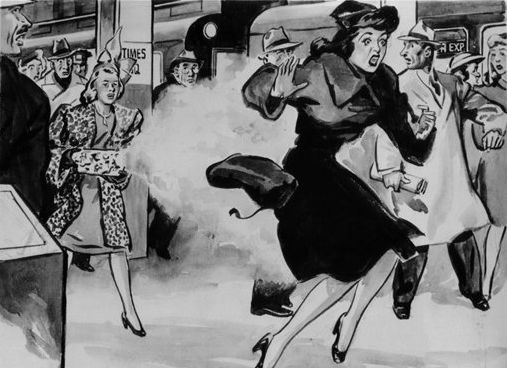
It turned out that the "X-ray camera" was really a camouflaged sawed-off shotgun. And Trapani was really La Rue's ex-wife, of whom he had grown insanely jealous. La Rue's real name was Alphonse Rocco. He had been stalking his ex-wife for several months.
Lusk was totally clueless about what she had done. As the subway police rushed up after the shooting, she told them, "I just took this woman’s picture and somebody shot her."
Rocco fled to upstate New York, where he died in a shootout with the police several days later.
Trapani survived, but lost her leg. She and Lusk reportedly became friends after the incident.
You can read more about the case at EinsteinsRefrigerator.com, or the New Yorker.
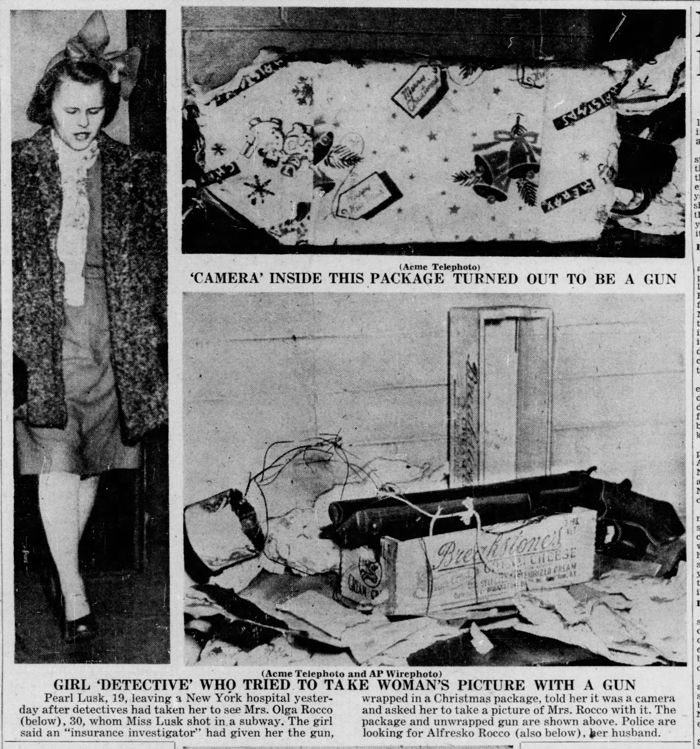
Philadelphia Inquirer - Jan 1, 1947
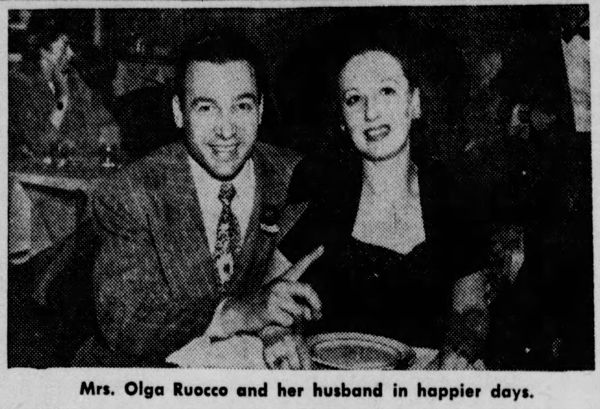
Washington Court House Record-Herald - Jan 3, 1947
Posted By: Alex - Sat Dec 31, 2016 -
Comments (1)
Category: Crime, 1940s
Niki de Saint Phalle Gun Art
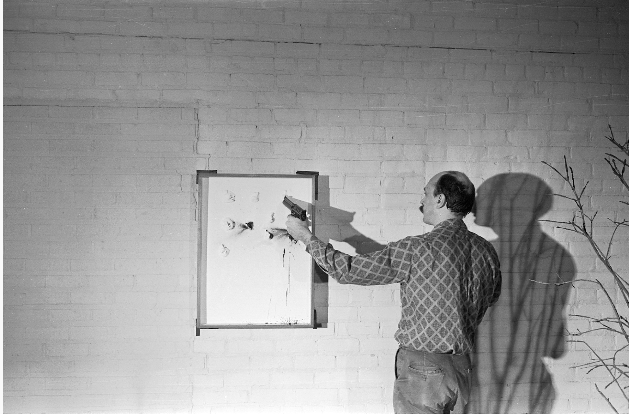
We've discussed much gun-based art here before--artists shooting themselves or other objects--but I do not believe we have yet covered this instance by Niki de Saint Phalle.
A white canvas with bags of paint concealed beneath was to be fired upon, releasing the paint in random patterns. But the project proved more intractable than anticipated.
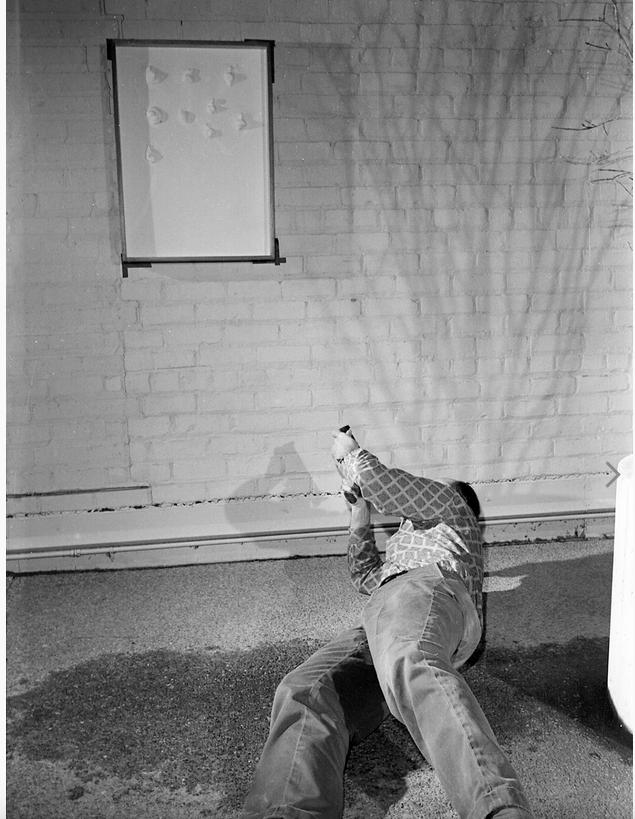
Full story here.
Posted By: Paul - Sat Dec 31, 2016 -
Comments (2)
Category: Art, Avant Garde, Guns, 1960s
December 30, 2016
Hardware Diet
March 1934: Forty-year-old Mabel Wolf of Brooklyn showed up at Kings County Hospital complaining of acute stomach pain and a loss of appetite. An x-ray revealed the presence of a large clump of metallic objects in her stomach. In a subsequent hour-long operation, surgeons removed 1,203 pieces of hardware from her stomach. The objects weighed a total of one pound, three ounces. Amazingly, they hadn't done her any serious harm.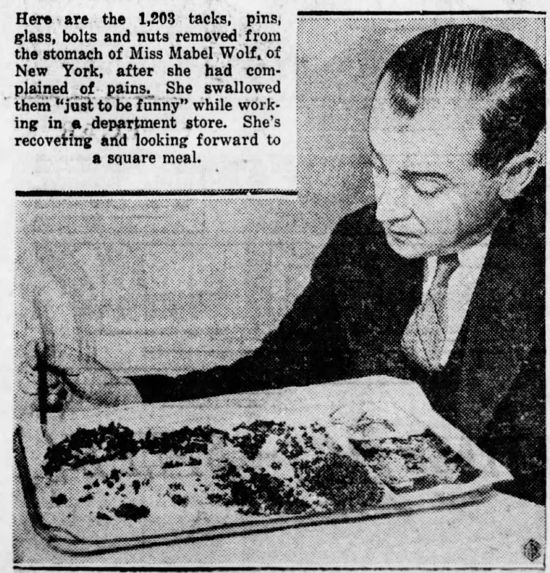
Lebanon Evening Report - Mar 21, 1934
The inventory of items removed included:
- 584 fine upholstery tacks
- 144 carpet tacks
- 2 chair tacks
- 1 roundheaded thumbtack
- 3 thumbtacks (ordinary)
- 46 small screws
- 6 medium screws
- 80 large screws
- 1 hook-shaped screw (coat hanger)
- 30 small bolts
- 47 larger bolts
- 3 picture hooks
- 3 nuts
- 2 large bent safety pins
- 1 small safety pin
- 2 stray pins without heads
- 1 matted mass of hair containing screws and pins
- 59 assorted beads
- 4 pieces of wire
- 89 pieces of glass (all sizes)
- 1 piece of teacup handle
Miss Wolf claimed that she had eaten all the objects five years earlier, in a single week, while she had been working at a Manhattan hardware store. (You have to wonder if the store had noticed the loss of inventory.)
When pressed further, Miss Wolf said, "I really don't know what started me on my diet. I guess I was just trying to be funny. Don't ask me any more about it. I only want to get well and go home."
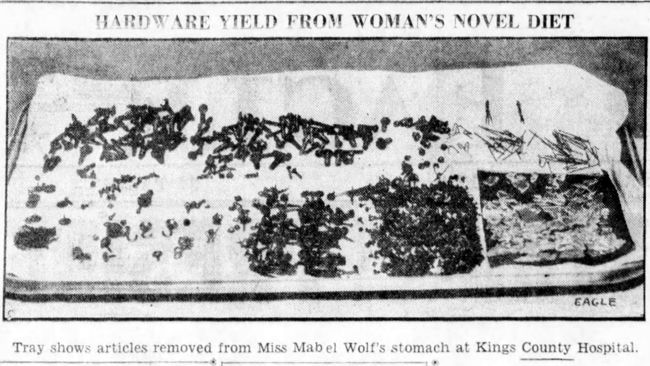
Brooklyn Daily Eagle - Mar 20, 1934
Miss wolf had suffered minor stomach pains for five years as a result of the objects, but she had been able to self-treat the discomfort with patent medicine. She finally went to a doctor when the pain became too intense.
One mystery that the doctors weren't fully able to explain was why the metal objects all clumped together in her stomach. Dr. Edwin H. Fiske speculated that "metallic objects in the stomach take on a kind of magnetism, which attracs the individual objects to one another, so that they cling together in one large ball, as if welded together. Thus the danger of the cuts from pointed nails and pins is lessened."
Evidently Miss Wolf suffered from the eating disorder known as pica, which is a compulsion to eat non-nutritive items such as paper, metal, chalk, mud, etc. I suspect that her strange diet hadn't been confined to a single week. She'd probably been doing it for quite a while.
We've previously posted about a few other people who suffered from this disorder, including the boy who ate the Bible and the Human Ostrich.
If you're interested in the subject of pica and people swallowing weird things, you can find a whole bunch of cases discussed (including Mabel Wolf) in Swallow: Foreign Bodies, Their Ingestion, Inspiration, and the Curious Doctor Who Extracted Them by Mary Cappello.
Posted By: Alex - Fri Dec 30, 2016 -
Comments (3)
Category: Food, 1930s, Mental Health and Insanity
The Egg
Posted By: Paul - Fri Dec 30, 2016 -
Comments (4)
Category: Fantasy, Eggs, Stop-motion Animation, 1970s, North America
December 29, 2016
Name That List, #35
What is this a list of? The answer is below in extended.- Floating in a pool
- Sitting in hot oil
- Sitting in a room screaming
- Walking for weeks without lying down, not even to sleep
- Staying awake for three days
- Sitting in a box with pythons
- Sitting in a coffin
- Sitting next to a rotting corpse
- Total silence for ten days
More in extended >>
Posted By: Alex - Thu Dec 29, 2016 -
Comments (6)
Category: Name That List
Peggy: American Legion “Flying” Parade Car


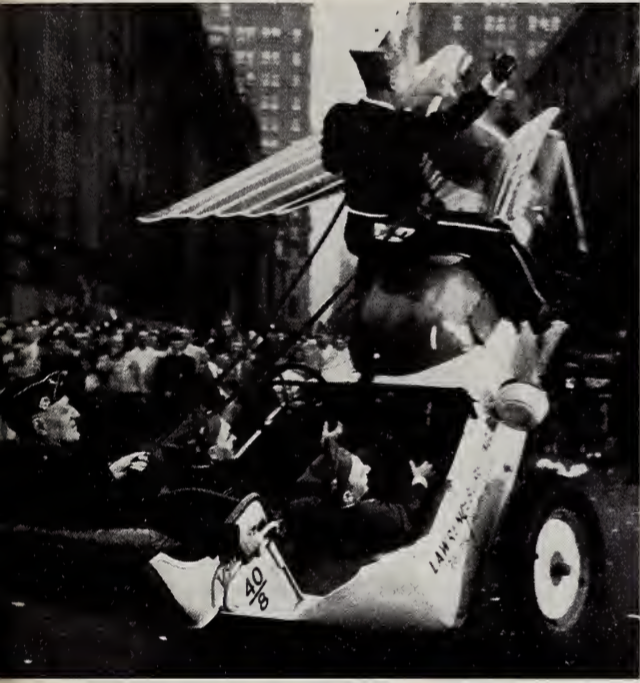
Posted By: Paul - Thu Dec 29, 2016 -
Comments (3)
Category: Cult Figures and Artifacts, Eccentrics, Corporate Mascots, Icons and Spokesbeings, Twentieth Century, Cars
December 28, 2016
England’s Poorest Baronet
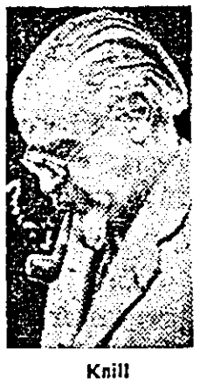
Knill was born into wealth. It was his grandfather, Stuart Knill, who was made the first Knill Baronet in 1893 (official title: Baronet Knill, of The Grove, Blackheath and Fresh Wharf, London). The 1st and 2nd Knill Baronets both served for a time as Lord Mayors of London.
Sir John Stuart Knill became the 3rd Baronet after the death of his father in 1934. However, he never actually registered the title, which meant that his Baronetcy was officially considered to be dormant, but that was a minor detail overlooked by the press.
Knill's fortunes began to go south after World War I. He lost his family's ancestral estate, Knill Court in Herefordshire, and fell back on his knowledge of antiques to make a living, opening an antique shop in Brighton. However, the shop failed to make a profit, so by the mid-1930s he had closed it and began operating a "bric-a-brac stall" in London's Caledonian market. On the weekends he swept streets.
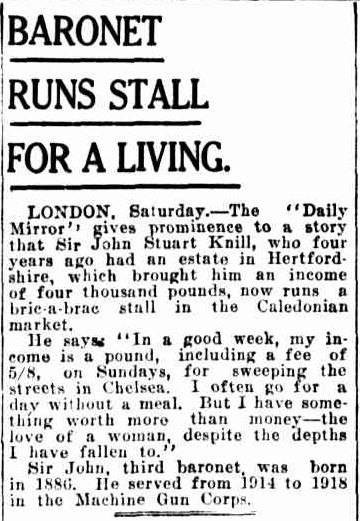
The Burnie Advocate - Apr 12, 1937
A job as a postman followed during the 1940s. His wife, Lady Ruth Evelyn Knill, supplemented the family income by working as a mill girl. Interviewed in 1950, she said, "We've lived hard and now we are down to rock bottom. I'm living up to my name. Of money, we have: Knill."
The Knills earned extra cash by breeding animals in their rented apartment, but due to failure to pay the rent they were evicted in 1951 and moved into public housing.

Sydney Morning Herald - Mar 1, 1951
The next time Knill made headlines was in 1962 when it was widely reported that he was "trying to recoup his lost fortune by hypnotizing his wife so she can win the weekly soccer pool." As reported by UPI:
So far the pursuit of riches in England's national pastime has failed to yield the results they hope for but this has not dampened their enthusiasm...
Both feel that their lack of success may be due to poor reception by Lady Knill.
"It seems to depend on the weather for accuracy," she said. "On a dull day I have a job to 'read' the results. Normally, when he hypnotizes me the TV set appears to be switched on. Sometimes it seems so bright that I have to ask him to tone it down."
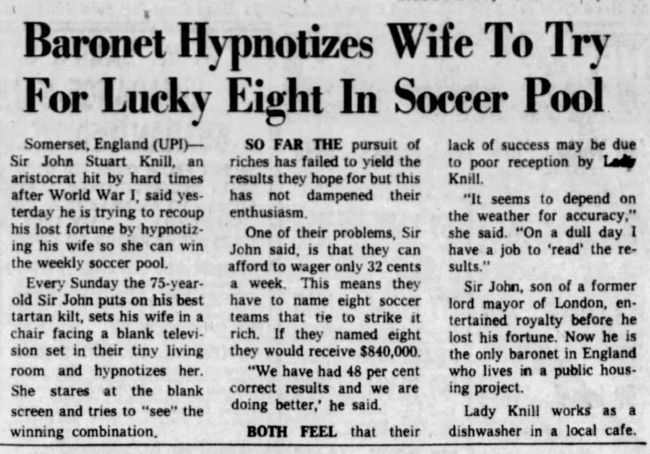
The Indianapolis Star - Mar 10, 1962
Knill died in 1973 at the age of 87. His son John (the 4th Baronet) was also quite a character. He was a long-time campaigner for the preservation of canals and was known around the city of Bath as a local eccentric, "propelling himself in a wheelchair operated by an astonishing system of levers, pulley and - it has to be said - cranks." More info about him here.
Posted By: Alex - Wed Dec 28, 2016 -
Comments (2)
Category: Eccentrics, Royalty
Cuckoo Girl
Justin Bieber fangirl phenomenon, 1959 version.
Posted By: Paul - Wed Dec 28, 2016 -
Comments (3)
Category: Bad Habits, Neuroses and Psychoses, Celebrities, Delusions, Fantasies and Other Tricks of the Imagination, Music, Teenagers, 1950s
December 27, 2016
Your Feet Are Killing You
In his 1953 book Your Feet Are Killing You, Dr. Simon J. Wikler expounded his theory that just about every medical problem one could imagine (cancer, allergies, tooth decay, etc.) was caused by shoes. His solution was to go barefoot. Ideally all the time.His theory was summarized in The Quarterly Review of Biology (Dec 1954):
The chain of events leading to the development of these diseases is described as follows. The modern shoe deforms the human foot, causes the muscles to shrivel, and leads to foot imbalance. Even the feet of infants are distorted because they are firmly tucked in under blankets or covered by tight stockings. Upon bearing weight, the deformity of the feet leads to a rolling out of the legs that carries the femora into external rotation. This deprives the pelvis of its anterior support, and allows it to dip downward in front. The spine is therefore forced into exaggerated curves, so that the abdominal space is reduced and the chest cavity is compressed. The vital organs and the blood vessels and nerves are displaced or abnormally stretched. The abnormal stresses lead to cancer of the breast, stomach, prostate, and uterus. To substantiate his thesis the author offers case histories and statistics. In addition to the development of this concept, the writer uses the latter part of the book to enumerate some foot ailments and to describe briefly the symptoms and treatment.
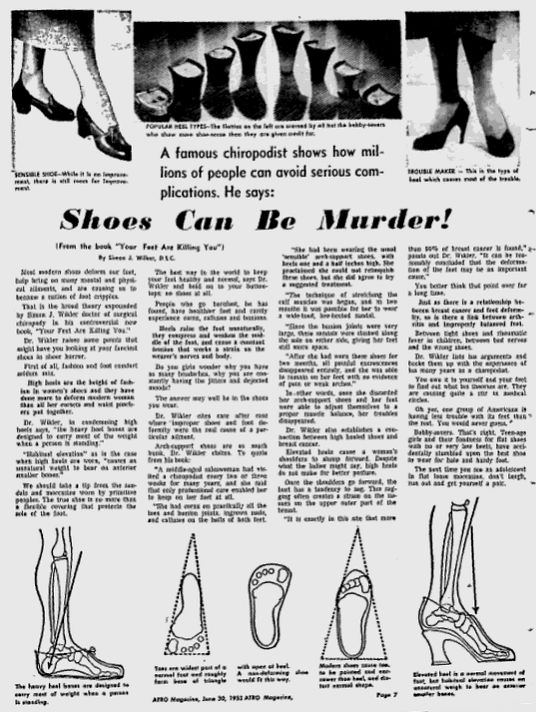
Washington Afro-American - June 30, 1953
A 1979 book by T.O. "Tip" Berg echoed Wikler's title, but added the word "literally" to give it even more dramatic emphasis:
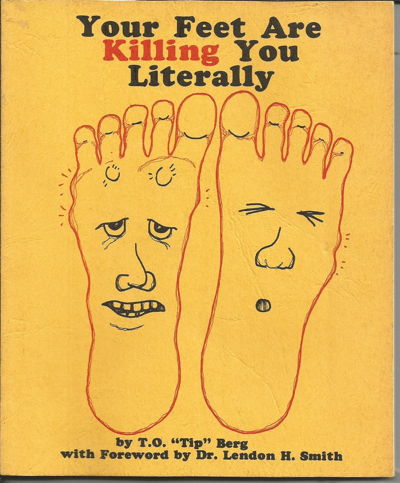
Posted By: Alex - Tue Dec 27, 2016 -
Comments (4)
Category: Books, Shoes, Diseases, Feet
The Football Nuns

Original article here.
I guess the choice of training camp for the Steelers once necessitated commissary duty by nuns. Plus other help, as seen below.
Not sure when this practice ended.
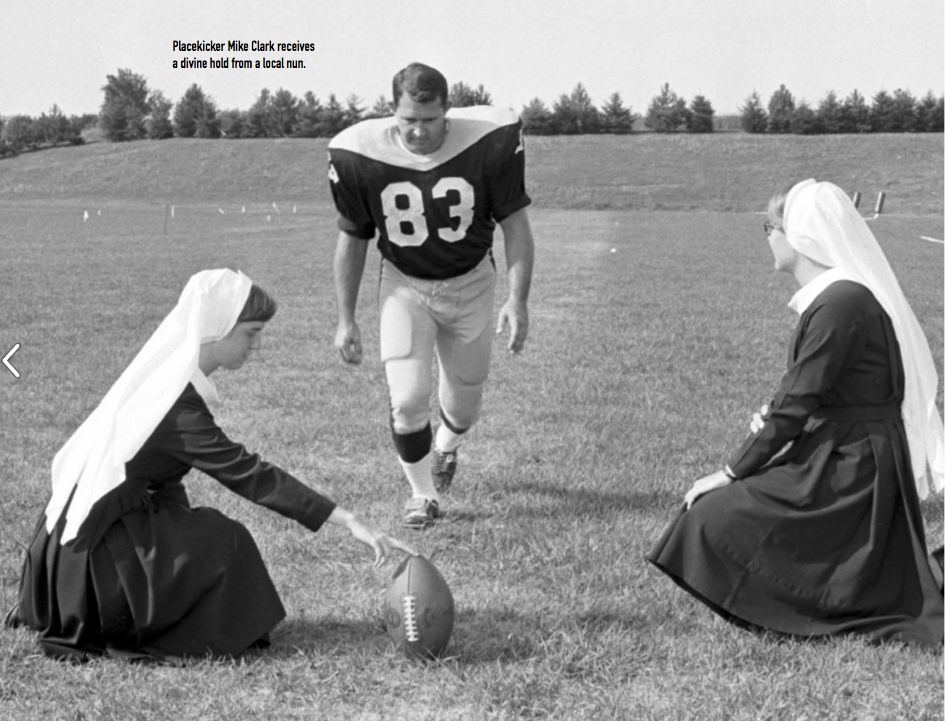
Posted By: Paul - Tue Dec 27, 2016 -
Comments (4)
Category: Religion, Nuns, Sports, 1970s
| Get WU Posts by Email | |
|---|---|

| Who We Are |
|---|
| Alex Boese Alex is the creator and curator of the Museum of Hoaxes. He's also the author of various weird, non-fiction books such as Elephants on Acid. Paul Di Filippo Paul has been paid to put weird ideas into fictional form for over thirty years, in his career as a noted science fiction writer. He has recently begun blogging on many curious topics with three fellow writers at The Inferior 4+1. Chuck Shepherd Chuck is the purveyor of News of the Weird, the syndicated column which for decades has set the gold-standard for reporting on oddities and the bizarre. Our banner was drawn by the legendary underground cartoonist Rick Altergott. Contact Us |

